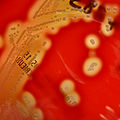File:Diagnostic algorithm of possible bacterial infection.png

Size of this preview: 780 × 600 pixels. Other resolutions: 312 × 240 pixels | 625 × 480 pixels | 999 × 768 pixels | 1,280 × 984 pixels | 2,560 × 1,968 pixels | 5,376 × 4,133 pixels.
Original file (5,376 × 4,133 pixels, file size: 2.77 MB, MIME type: image/png)
File history
Click on a date/time to view the file as it appeared at that time.
| Date/Time | Thumbnail | Dimensions | User | Comment | |
|---|---|---|---|---|---|
| current | 14:58, 27 July 2023 |  | 5,376 × 4,133 (2.77 MB) | Mikael Häggström | Correction of group B strep |
| 22:40, 26 July 2023 |  | 5,376 × 4,141 (2.78 MB) | Mikael Häggström | Update | |
| 20:36, 26 July 2023 |  | 5,376 × 4,181 (2.77 MB) | Mikael Häggström | Update | |
| 22:54, 25 July 2023 |  | 5,237 × 4,305 (2.75 MB) | Mikael Häggström | Uploaded a work by {{Mikael Häggström|cat=Medical diagrams}} from {{Own}} with UploadWizard |
File usage
The following pages on the English Wikipedia use this file (pages on other projects are not listed):
- Agar plate
- Anaerobic organism
- CAMP test
- Enterococcus
- Gram-negative bacteria
- Group A streptococcal infection
- Matrix-assisted laser desorption/ionization
- Microbiological culture
- Pathogenic bacteria
- Pseudomonas infection
- Staphylococcal infection
- Streptococcus
- Streptococcus pneumoniae
- User:L. Elizabeth Turner/Microbiological culture
Global file usage
The following other wikis use this file:
- Usage on hy.wikipedia.org

















